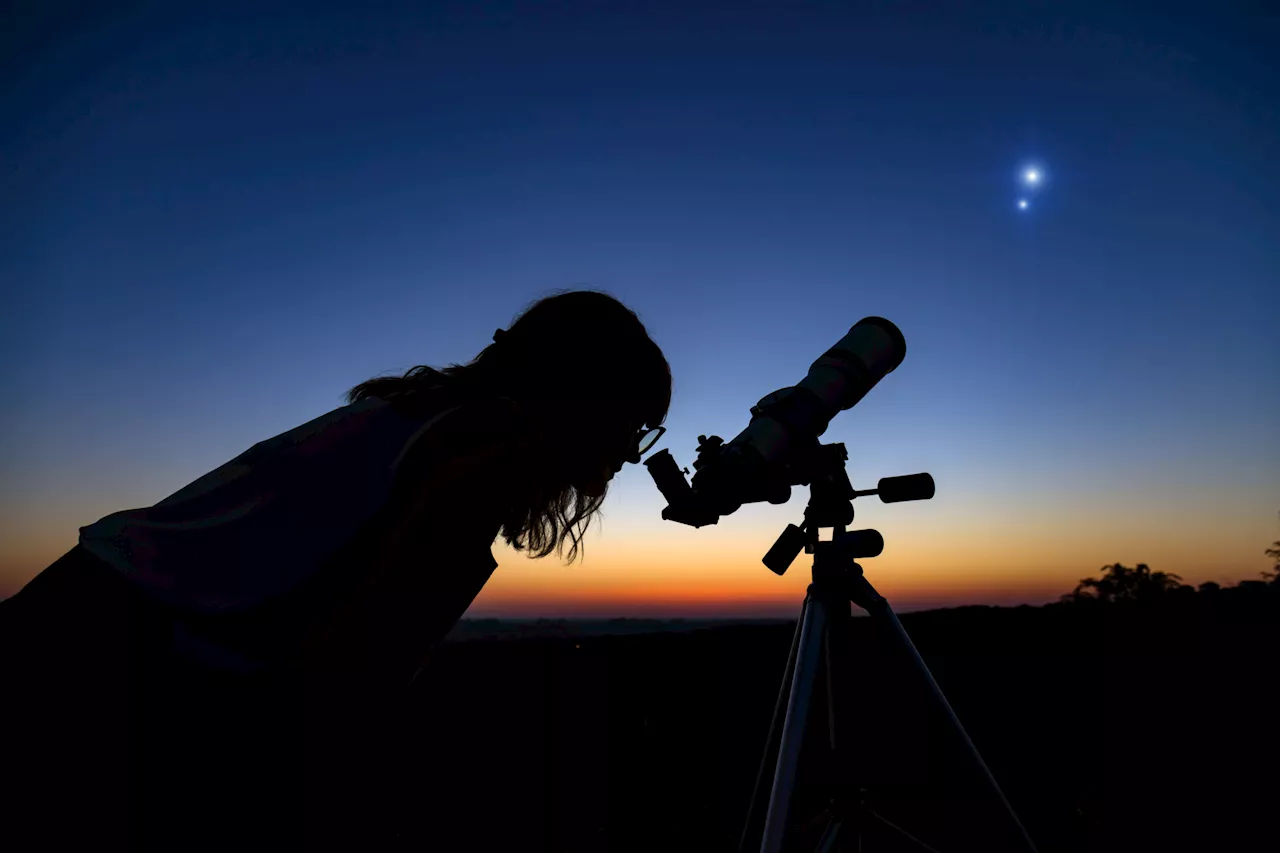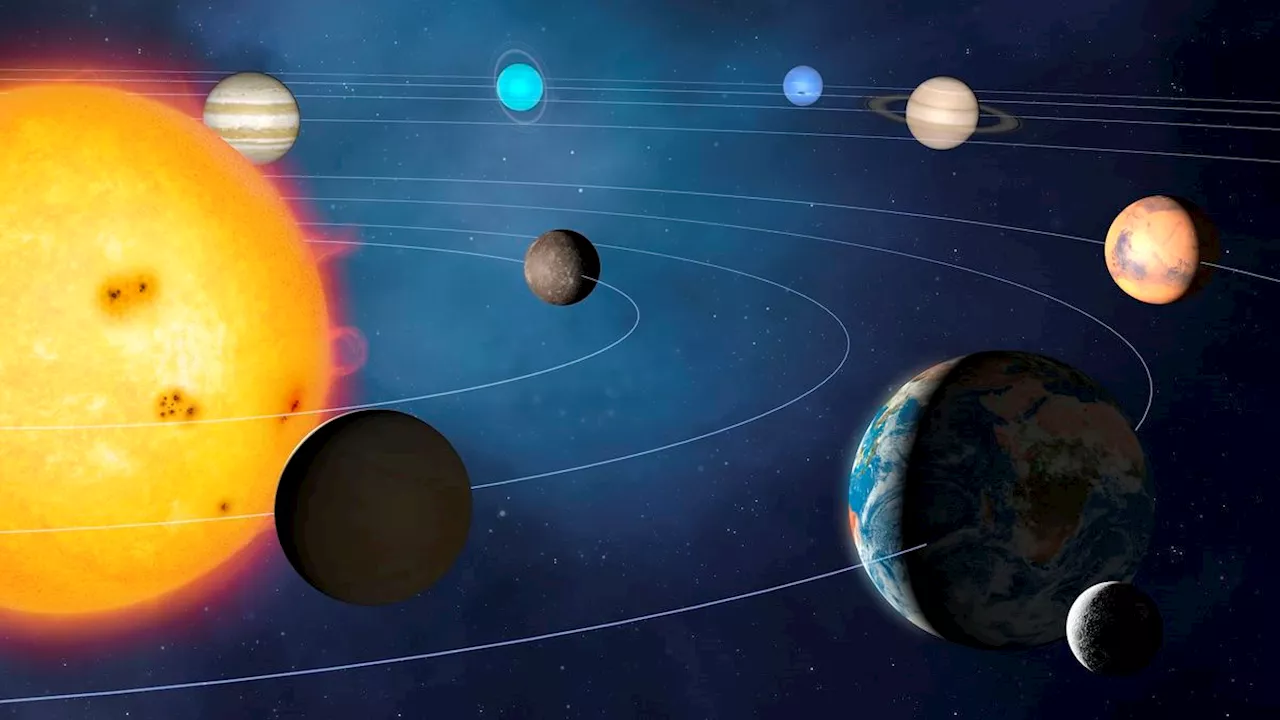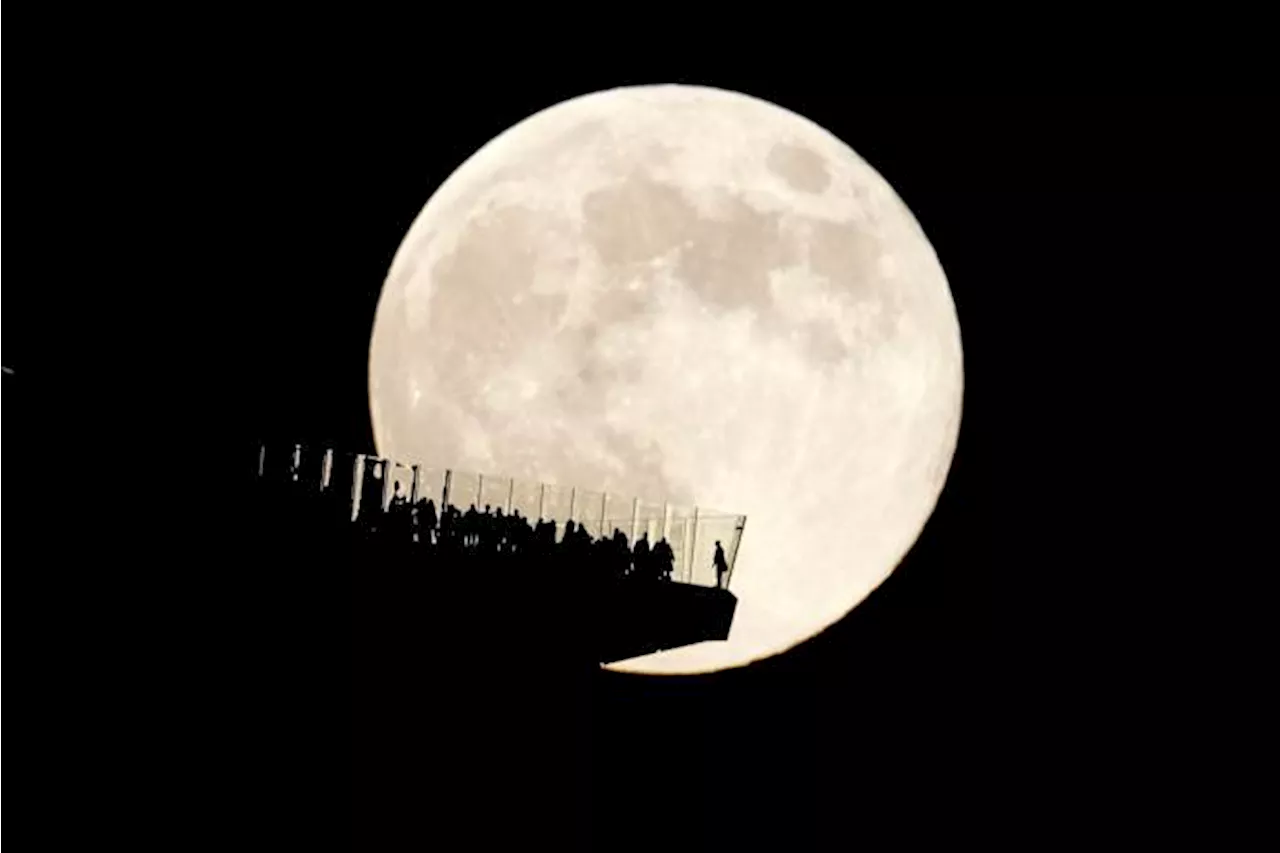Get ready for a celestial show! A rare six-planet alignment will be visible in the early night sky in mid-January, offering a spectacular sight for skywatchers. While a seven-planet alignment is the maximum possible, this six-planet parade will feature Venus, Mars, Jupiter, Saturn, Uranus, and Neptune.
Look up in mid-January just after sunset and you'll see a six-planet alignment : Four with your naked eye and two with a telescope. It's a six-planet parade! There are eight planets in our solar system and one dwarf planet (Pluto). Because we live on Earth, the most we could see is a maximum of seven planets total. However, they are not always in the same direction or sector, but rather scattered all around the solar system at varying positions around the sun.
In mid-January, all of the planets are on one side of the sun, except for Mercury, which is still on the other side of the sun. We will be one planet short of a maximum alignment. Six planets will still be possible to see in one ecliptic plane in the southern and eastern night sky, just after sunset: Venus, Mars, Jupiter, Saturn, Uranus and Neptune. We created a rough illustration on location and brightness of the planets for the nights of Jan. 17 and 18. NASA says those will be the best nights to see all six planets closer together before some disappear into the horizon while others start to appear. They do have differing magnitudes of brightness. The more negative you are, the brighter the object is, and thus easier for us to see. The more positive you are, the dimmer and object is, and thus harder for us to see. (Note: The objects on the magnitude scale show what we can see at different magnitudes to help put these numbers in perspective. Our unaided human eye can see a maximum of magnitude 6.0. The Hubble Space Telescope can see objects up to a magnitude of 27.0. The sun shines at a magnitude of -27.0.) Notice how they are not necessarily in a straight line from our perspective. That is because the planets orbit the sun in an ecliptic plane. This illustration is from a northern hemisphere mid-latitude (near Indianapolis). From our view, the line of planets looks more like an arc. We are looking at the plane from an angle. Alignments are actually fairly common. Two to four planet alignments can happen a few times a year, or a conjunction of two planets (two planets that appear close together). A six-planet alignment doesn't happen every single year, but it happens more often than you think. The last one we had was in June 2024. Seven-planet alignment (max we can possibly have) are more rare; however, we have one coming up in late February 2025. We've had a good amount of alignments recently. In ancient days, stargazers, astronomers and royal magicians would see alignments and make prophecies or decipher them as omens or the reason for certain natural disasters or other ills in society
Astronomy Six-Planet Alignment Planetary Alignment Stargazing Space Observation
United States Latest News, United States Headlines
Similar News:You can also read news stories similar to this one that we have collected from other news sources.
 Four-Planet Conjunction Lights Up January SkyA rare celestial event allows stargazers to witness a spectacular alignment of four planets - Venus, Saturn, Jupiter, and Mars - this January.
Four-Planet Conjunction Lights Up January SkyA rare celestial event allows stargazers to witness a spectacular alignment of four planets - Venus, Saturn, Jupiter, and Mars - this January.
Read more »
 Planet Parade: Catch a Glimpse of Multiple Planets in January and MarchThis science and technology magazine article highlights the upcoming opportunity to see a spectacular alignment of planets in the night sky during January and March. The article explains how to view this celestial event, including the best dates and times, and mentions the visibility of planets like Jupiter, Mars, Venus, Uranus, Neptune, and Mercury. It also clarifies the misconception that planets are aligned during these 'parades'.
Planet Parade: Catch a Glimpse of Multiple Planets in January and MarchThis science and technology magazine article highlights the upcoming opportunity to see a spectacular alignment of planets in the night sky during January and March. The article explains how to view this celestial event, including the best dates and times, and mentions the visibility of planets like Jupiter, Mars, Venus, Uranus, Neptune, and Mercury. It also clarifies the misconception that planets are aligned during these 'parades'.
Read more »
 Catch Mars at its Best in January: The Red Planet Shines with a Lunar OccultationJanuary offers a spectacular opportunity to observe evening planets. Venus shines brightly in the west, reaching its greatest elongation on January 10th. Jupiter dominates the eastern sky, while Mars rises in the east later in the evening. A special event awaits observers in North America on Monday night, as the nearly full moon will occult Mars. This alignment marks the optimal time to observe Mars, as Earth's approach causes its apparent size to increase in telescopes. Mars will be near Pollux in late January, then move through Cancer and transit the open cluster Messier 44 on May 4th. It will pass near Regulus and remain visible in the evening sky throughout 2025 until it reaches solar conjunction on January 9th, 2026.
Catch Mars at its Best in January: The Red Planet Shines with a Lunar OccultationJanuary offers a spectacular opportunity to observe evening planets. Venus shines brightly in the west, reaching its greatest elongation on January 10th. Jupiter dominates the eastern sky, while Mars rises in the east later in the evening. A special event awaits observers in North America on Monday night, as the nearly full moon will occult Mars. This alignment marks the optimal time to observe Mars, as Earth's approach causes its apparent size to increase in telescopes. Mars will be near Pollux in late January, then move through Cancer and transit the open cluster Messier 44 on May 4th. It will pass near Regulus and remain visible in the evening sky throughout 2025 until it reaches solar conjunction on January 9th, 2026.
Read more »
 2025's celestial show: Six-planet parade, eclipses, and a supermoonGet ready for a spectacular year of celestial events in 2025, starting with a six-planet parade in January and culminating in multiple eclipses and a supermoon.
2025's celestial show: Six-planet parade, eclipses, and a supermoonGet ready for a spectacular year of celestial events in 2025, starting with a six-planet parade in January and culminating in multiple eclipses and a supermoon.
Read more »
 Six logical trades that NHL teams should make in JanuaryNo trades can be made from Dec. 20-27. But after that? Here are a handful of mutually beneficial deals that make too much sense.
Six logical trades that NHL teams should make in JanuaryNo trades can be made from Dec. 20-27. But after that? Here are a handful of mutually beneficial deals that make too much sense.
Read more »
 Six U.S. Men's National Team Players Could Transfer in JanuaryWith the January transfer window opening soon, several U.S. men's national team players could be on the move. This article highlights six Americans who might switch teams during the winter transfer period, including Sergino Dest and Ricardo Pepi.
Six U.S. Men's National Team Players Could Transfer in JanuaryWith the January transfer window opening soon, several U.S. men's national team players could be on the move. This article highlights six Americans who might switch teams during the winter transfer period, including Sergino Dest and Ricardo Pepi.
Read more »
